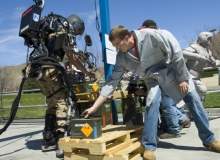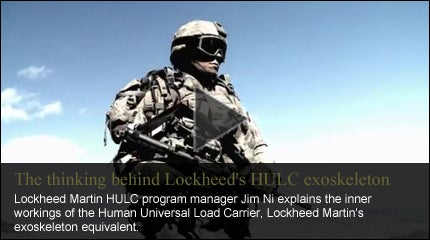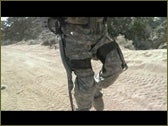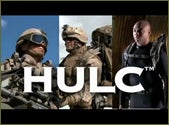
In developments which have seen reality mimicking science-fiction, new technologies have enabled military scientists and research teams to develop robotic armoured suits for warfighters or military exoskeletons, like those seen in Hollywood films such as Ironman, Avatar and The Matrix.
Military exoskeleton suits, designed to fit around a dismounted soldier to give them almost-superhuman capabilities, can be fitted onto the body of a soldier in order to improve physical characteristics, such as strength or endurance, creating huge advantages for inboth combat and carrying out logistical tasks.
Although previous programmes, such as the Handiman project co-developed by General Electric and the US Military, suffered from serious limitations due to weight and mobility issues, companies including Raytheon and Lockheed Martin are now taking advantage of new materials and technologies to make science-fiction become science-fact.
Military exoskeleton armour capabilities
Enhancing or boosting the capabilities of soldiers using a powered exoskeleton poses many advantages, particularly in the logistical field.
Current programmes, such as Raytheon’s XOS exoskeleton and Lockheed Martin’s human universal load carrier (HULC) have demonstrated greatly improved strength, allowing soldier to carry loads of up to 200lbs for extended periods of time.
This could allow soldiers to undertake tasks such as loading ammunition onto an array of military vehicles without the need of heavy-lift machinery, as well as moving obstacles on the battlefield with ease.
Soldiers would also be capable of running greater distances with reduced fatigue, courtesy of transferring weight to the ground through powered titanium legs.
Human universal load carrier
Originally developed by Ekso Bionics, Lockheed Martin entered into an exclusive licensing agreement in January 2009 in order to co-develop the human universal load carrier (HULC).
HULC is an un-tethered, hydraulic-powered, anthropomorphic exoskeleton designed specifically to fit around the body of a dismounted soldier. The system’s flexible design poses little to no restriction of movement, a crucial element for warfighters using the system in theatre.
There is no joystick or control mechanism, instead sensors detect movement and, using an onboard micro-computer, make the suit to move in time with the body. The system’s titanium structure and hydraulic power augments the soldier’s ability, strength and performance, whereas its modularity allows components to be switched and replaced with ease.
Most recently, the HULC has been evaluated at the US Army Natick Soldier Research Development and Engineering Center in Massachusetts, US, with the upgraded system including extended battery life and optimised control software.
Raytheon XOS exoskeleton
Raytheon’s equivalent of the HULC, the XOS 2, was unveiled in September 2010 and highlighted its similarities with the capabilities of the powered body armour suit worn in the ‘Ironman’ series of films. Raytheon considered its predecessor, the XOS 1, a proof of concept and as such used XOS 2 to demonstrate a 50% reduction in power conception.
Raytheon Sarcos vice president of operations Dr Fraser M Smith said: “With XOS 2, we targeted power consumption and looked for ways to use the hydraulic energy more efficiently. That’s resulted in us being able to add capabilities while significantly reducing power consumption.
“They are desperately needed, and I believe the military looks at them as viable solutions to a number of current issues they are trying to address. With a sustained commitment, they could be in place within five years.”
The system itself has been developed with the main aim of fulfilling logistical tasks and needs which are faced both in and out of theatre, rather than direct combat, but weapon attachments have been explored.
The main task associated with it, much like the HULC, is heavy lifting, reducing the risk of orthopaedic injuries sustained by soldiers.
The XOS allows the soldier to operate faster and for longer periods of time, often fulfilling the role of two or three soldiers, allowing the reallocation of soldiers for more strategic tasks.
Although the current system is tethered to a power supply, an un-tethered system is in development and the suit works using structures sensors, actuators and controllers that respond to human movement rather than being controlled through a joystick.
Raytheon believe that, with continued support, a form of powered exoskeleton suit could be in place within five years.
Exoskeletons entering development and testing
With both the HULC and XOS exoskeleton suits passing the proof of concept stage, testing and development has commenced and Lockheed Martin certainly appear to have stolen a march on its Raytheon rival, with the HULC having been tested at the Natick Soldier Research Development and Engineering Center.
The proposed benefits of the system were evaluated, with biomechanical testing analysing changes in energy expended by users both with and without the system, while also assessing how quickly a soldier can acclimatise to using the system.
Although both exoskeleton equivalents are geared towards a logistical purpose, if they are to be fielded in theatre then a considerable amount of work is needed in order to ensure the user is protected.
Although constructed out of titanium, the current framework of both systems offers little protection from enemy fire, and the challenges associated with installing body armour onto a platform without adding significant weight are apparent.
The challenges and future development of powered exoskeleton suits
The challenge of balancing the weight of the exoskeleton alongside the protection it offers the soldier has been partly addressed with the adoption of titanium over steel in the framework, along with the possibility of using moulded carbon fibre armour plates as lightweight protection. Both materials are, however, comparatively expensive.
Another challenge that will need to be resolved is the issue of power supply, as each future exoskeleton suit will need to be untethered in order to reach its full capabilities.
Presently, few power sources have the sufficient energy density to support suit with the energy demands placed upon it, however electrochemical and solid oxide fuel cells are being explored as possible options.
Finally, more work is required in the elimination of unsafe or invalid actions or movements, protecting a soldier from injury in the event of accidental collision or movement that exceeds the limits of the human body.
Although partially solved by the restriction of joints, such as the knee or elbow, more work will be needed so that sensors can differentiate between intentional and unintentional movements, such as sneezing or involuntary muscle spasm, in order to truly protect the user.
Human Universal Load Carrier (HULC)
The Human Universal Load Carrier (HULC) is an exoskeleton being developed by Lockheed Martin for dismounted soldiers. The hydraulically-powered HULC enables soldiers to carry heavy loads with minimal strain on their body.






